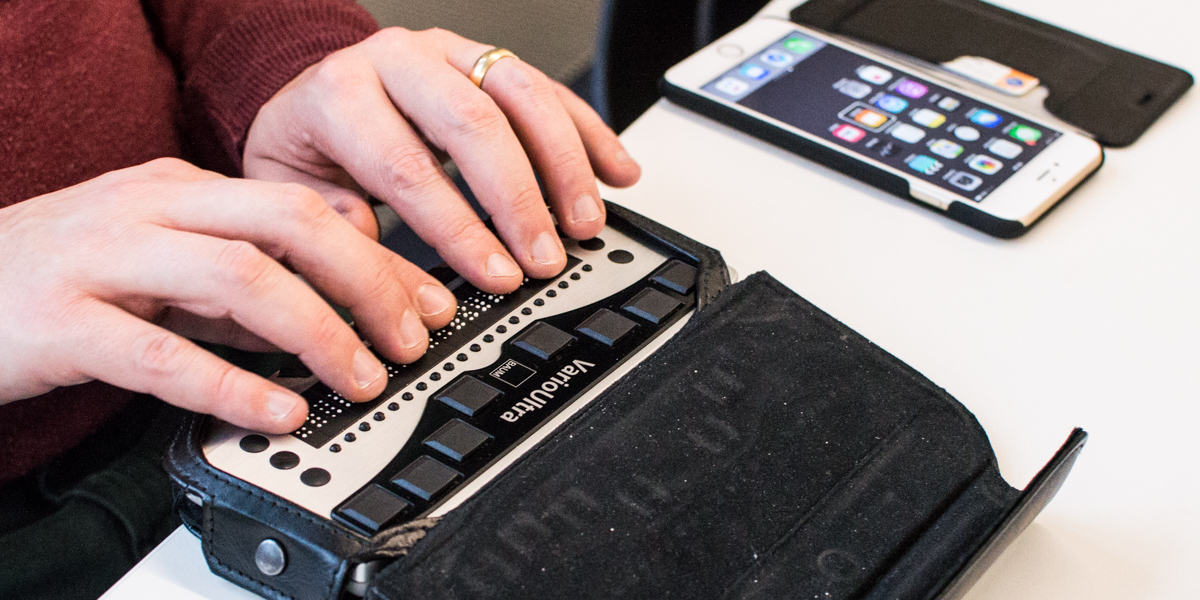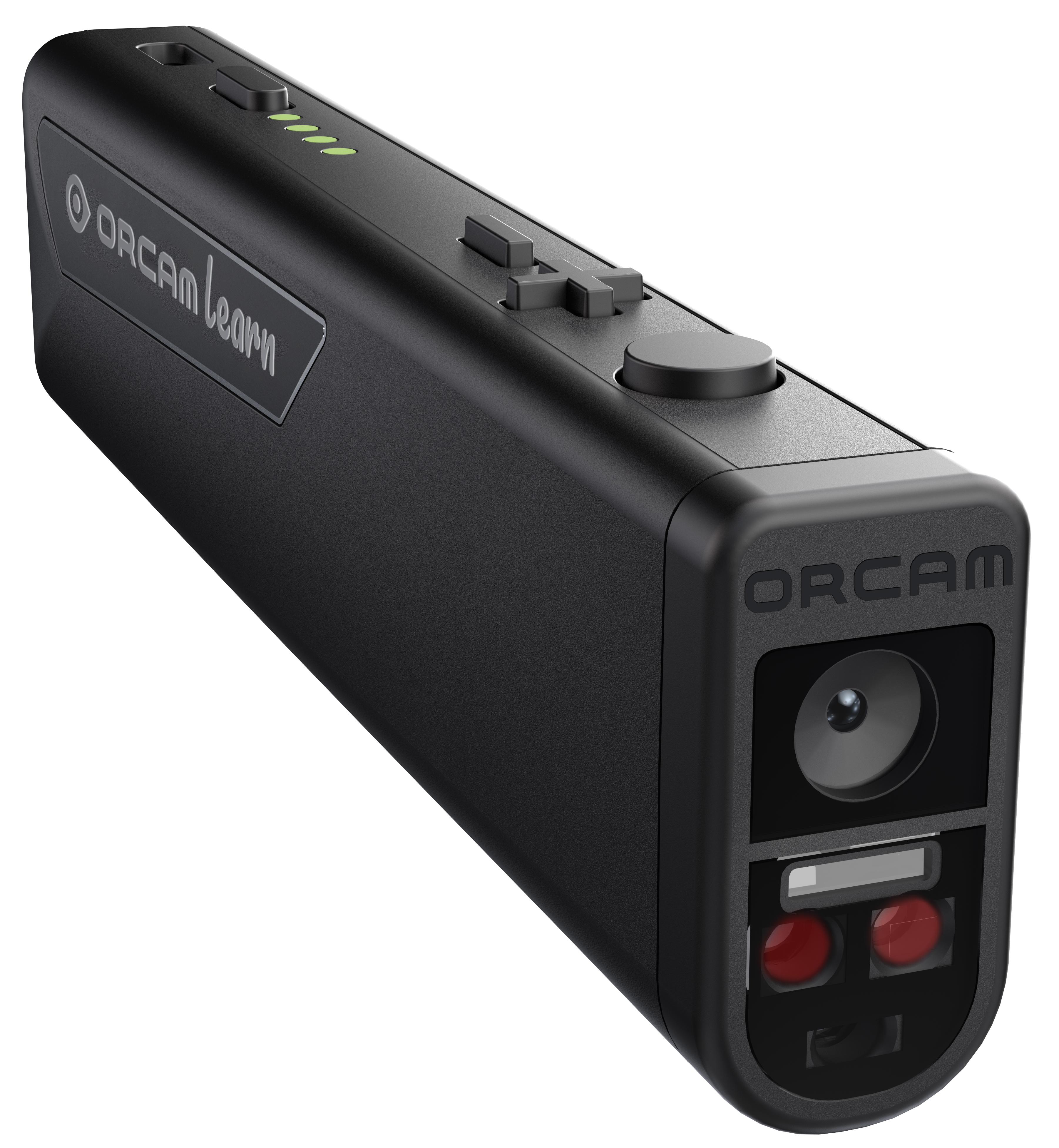Enhance Accessibility with Braille Displays and Notetakers
Enhance Accessibility with Braille Displays and Notetakers
Blog Article
Empowering Independence With Assistive Modern Technology for the Blind
The combination of assistive technology right into the lives of individuals with aesthetic disabilities represents a significant innovation in promoting self-reliance and self-sufficiency. From cutting-edge display visitors to sophisticated smart walking sticks, these tools not just improve day-to-day navigation and interaction yet likewise empower customers to engage meaningfully in numerous facets of life. As we explore the myriad advantages and real-world applications of these innovations, it becomes critical to analyze the hidden aspects that contribute to their effectiveness and the capacity for future advancements in this important field.
Summary of Assistive Innovation

The advancement of assistive technology is grounded in principles of inclusivity and empowerment. Advancements in software application, equipment, and sensory improvements supply individuals with options customized to their details demands. From display readers that transform text to speech, to tactile gadgets that share information via touch, these devices change the means individuals involve with their environments.
In enhancement to practical applications, assistive innovation fosters better social addition and participation in numerous markets, consisting of education and learning and employment (Voice-activated assistive devices). As r & d proceed to progress, the possibility for assistive technology to additionally enhance the lives of aesthetically damaged people continues to be appealing, leading the means for a much more fair culture where every person can flourish
Sorts Of Assistive Instruments
A range of assistive devices have emerged to sustain people with visual impairments, each developed to meet certain requirements and enhance daily functioning. These gadgets vary from low-tech options to sophisticated innovations, providing varied choices for users.
Low-tech tools consist of magnifiers and large-print products that aid in analysis and writing. Braille devices, such as Braille slates and styluses, make it possible for tactile reading and communication. Positioning and wheelchair aids, like white canes, help users browse their atmosphere securely.
On the greater end of the spectrum, electronic magnifying systems and screen readers provide significant assistance. Electronic magnifiers enable customers to increase the size of text and pictures on screens, while display viewers transform digital web content right into manufactured speech, promoting accessibility to details on smart devices and computer systems.
Smartphone applications additionally play a critical duty, supplying attributes like message recognition and navigating assistance. Wearable technology, such as smart glasses equipped with increased reality, is arising as an encouraging device to enhance situational understanding.
Advantages of Assistive Technology
The combination of assistive modern technology substantially improves the lifestyle for people with visual problems. These technologies equip individuals by promoting self-reliance, enabling them to navigate their atmospheres more successfully and carry out day-to-day tasks with higher convenience. As an example, display readers and zoom software program enable people to access digital info, promoting academic and expert chances that might have formerly been out of reach.
In addition, assistive tools such as wise canes and general practitioners applications provide real-time navigating assistance, boosting mobility and security. This boosted autonomy not just improves self-worth however also encourages social interaction, allowing individuals to participate even more totally in their neighborhoods.
Assistive innovation also facilitates interaction, helping users attach with others with voice acknowledgment and text-to-speech applications. This capability is important for keeping connections and accessing crucial details.
Furthermore, the personalization options readily available with numerous assistive modern technologies make certain that individuals can customize gadgets to their specific requirements, even more recommended you read boosting functionality and performance. Generally, the benefits of assistive technology for individuals with visual problems are extensive, promoting an extra inclusive culture where everyone can seek their objectives and aspirations.
Case Studies and Success Stories
Highlighting the transformative impact of assistive technology, many case research studies highlight how people with aesthetic impairments have actually successfully integrated these tools into their every day lives. One compelling instance includes an university student who made use of display reading software program to navigate academic materials and online resources efficiently. This modern technology not only facilitated her education however also boosted her self-confidence in joining discussions and group jobs.
Another study includes a specialist that utilizes a smart device application made for navigation and item recognition. By utilizing this app, he has regained autonomy in both his personal and work atmospheres, enabling him to commute separately and involve with colleagues better.
Furthermore, a retired person shared her experience with braille e-readers, which allowed her to access a large selection of literature and remain connected with her community through book clubs.
These success stories emphasize the critical role of assistive innovation in cultivating self-reliance, boosting quality of life, and promoting social integration for individuals with aesthetic impairments (Braille displays and notetakers). By embracing these cutting-edge tools, customers can overcome difficulties and confiscate chances that contribute to their professional and individual satisfaction

Future Trends in Assistive Technology
Development in assistive technology is positioned to redefine the landscape of assistance for people with aesthetic impairments. Emerging patterns highlight the combination of expert system (AI) and equipment knowing, which boost the capability of devices that assist with navigating and details ease of access. For instance, AI-driven applications are now with the ability of analyzing visual information in real-time, enabling customers to involve with their setting a lot more separately.
In addition, the growth of wearable modern technology is advancing swiftly. Smart glasses equipped with enhanced fact (AR) can give audio descriptions of environments, transforming exactly how users communicate with public areas. These devices More Info not just promote freedom however likewise foster social addition.
Furthermore, the Web of Things (IoT) is making homes smarter, allowing for seamless connectivity in between assistive tools and everyday devices. This connection empowers customers by allowing automated actions and voice-activated controls tailored to specific demands.
Final Thought
Finally, assistive innovation plays a critical function in encouraging individuals with aesthetic problems by boosting their self-reliance and involvement with their surroundings. The diverse range of applications and tools readily available not just promotes navigation and interaction but also promotes social integration and chances for personal and specialist growth. browse around these guys As innovations proceed in this area, the potential for enhancing the high quality of life for those with aesthetic problems will increase, promoting higher freedom and empowerment.

Report this page